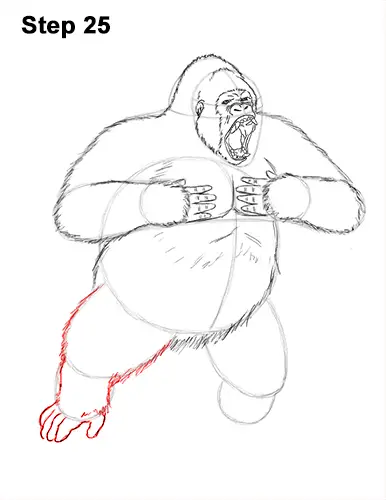
Step 25: Use the initial arcs on the lower, left side of the body as guides to draw the gorilla's first leg. Use quick, short strokes as you follow the outer edge of the guides to draw the short leg. Lightly sketch the toes as long, thin, slightly curved arcs at the edge of the foot. The feet and toes look very similar to hands and fingers. Don't forget to add the "thumb" on the right side. Pay attention to the different sizes of the toes. When you get the shapes right, darken the lines.
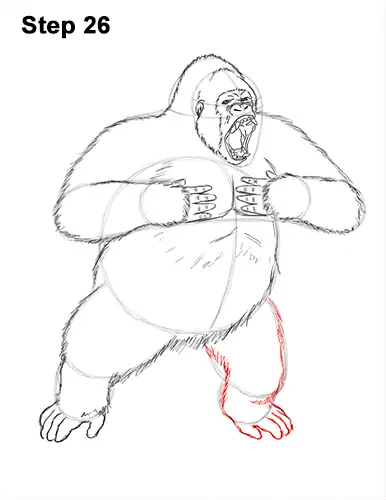
Step 26: Use the initial arcs as guides to draw the leg on the right the same way. Use quick, short strokes as you follow the outer edge of the guides to create the shape of the furry leg. Draw the gorilla's toes at the bottom, starting with the "thumb" near the lower edge of the foot. Draw the remaining four toes as short, curved arcs on the right side of the foot.
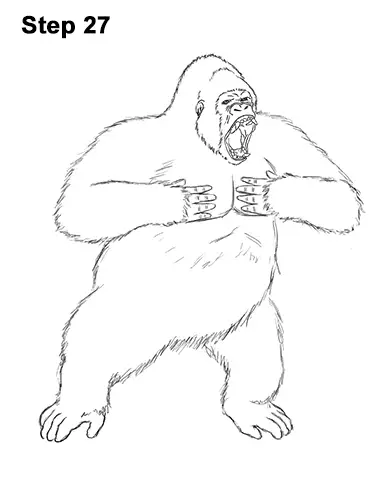
Step 27: For a cleaner look, erase as much as you can of the initial guide lines. Don't worry about erasing all of the guides. It's okay to leave some behind. Re-draw any final sketch lines that you may have accidentally erased.
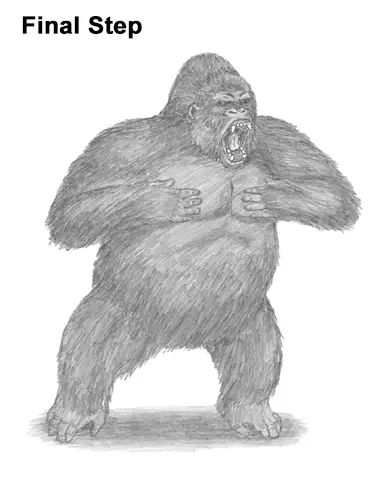
Final Step: Add some shading to your gorilla drawing to give it more detail, dimension and volume. As you add the value, use strokes that go in the general direction of the fur. Separate each individual stroke a bit so that the white of the paper comes through and creates a furry- looking texture.
Use a dark value inside the gorilla's mouth and a lighter value for the tongue and on the face. Leave the teeth without value. Vary the pressure on your pencil to get different degrees of tonal value. Use shorter strokes for the fur on the head and longer strokes for the fur on the body. Don't worry about shading the fur too smoothly. The rough value gives the coat a furry texture. Instead focus on adding the strokes in the basic direction that the fur should go. The strokes on the arms have a diagonal orientation that gradually turns more horizontal near the hands. The chest and the top of the belly have less fur, so this section should be a bit smoother and the value lighter.
Adding the value can be very time-consuming, so be patient and take breaks. You can add the value to different sections of the gorilla's body at a time to break up the shading process. Use lighter, smoother strokes near the top half of the belly and darker, rougher, longer strokes near the bottom. The strokes at the bottom of the belly and on the legs should have a somewhat vertical orientation. Continue adding the value until the gorilla's entire body is covered in fur. The feet have less fur, so add a smoother value there. Don't forget to pause the video after each step to draw at your own pace.
Add a cast shadow underneath. This helps ground the gorilla so it doesn't appear to be floating.
Thanks for watching! Subscribe to the How2DrawAnimals YouTube Channel for a new tutorial every Tuesday.
To learn how to draw popular cartoon characters, visit EasyDrawingTutorials.com.
RELATED TUTORIALS
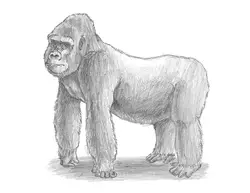 |
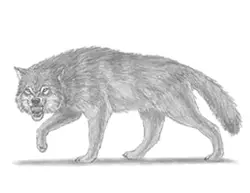 |
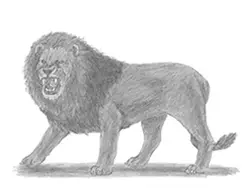 |







